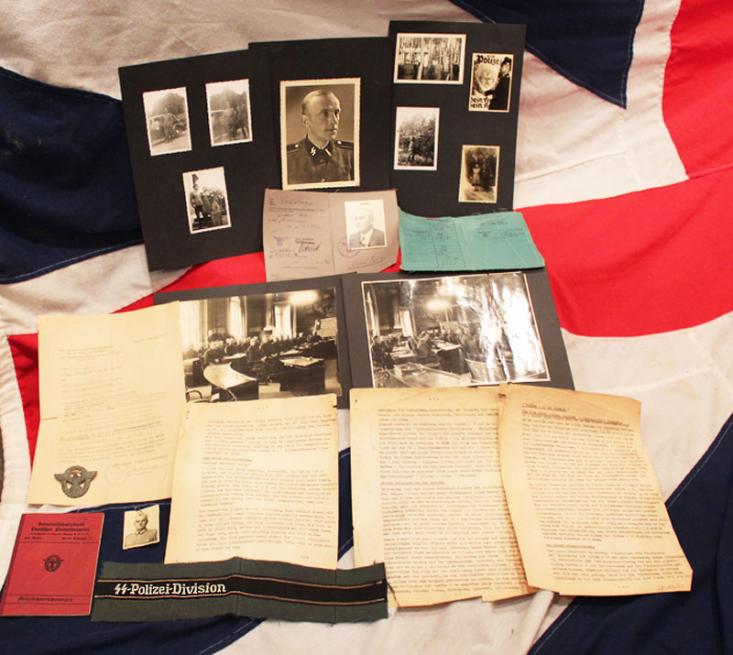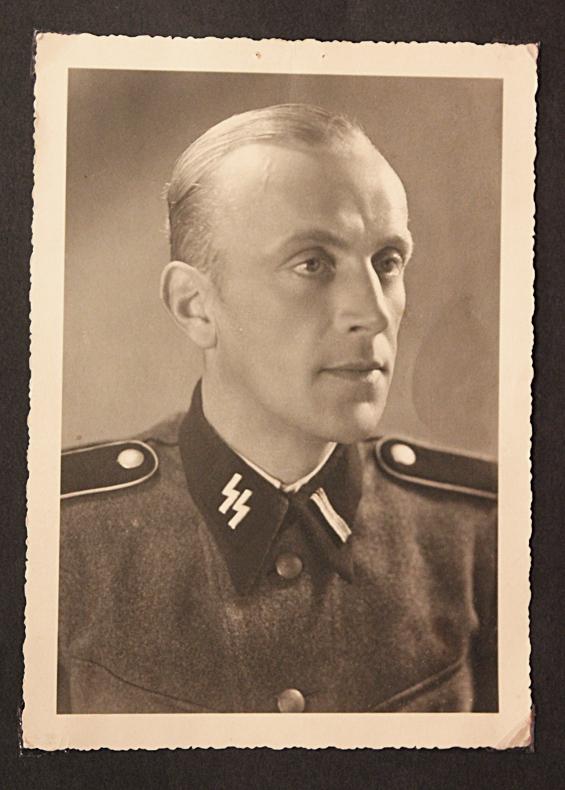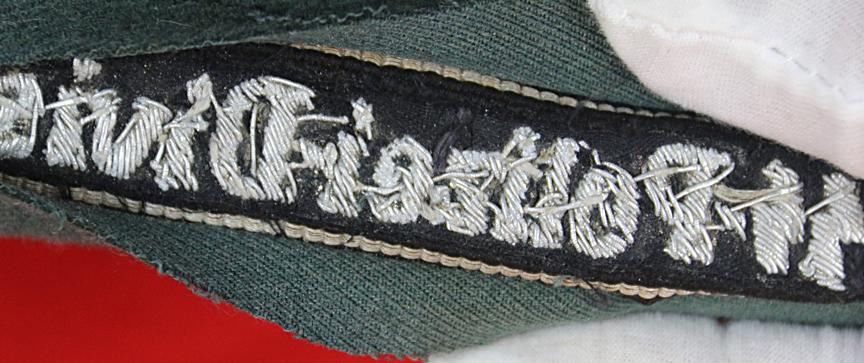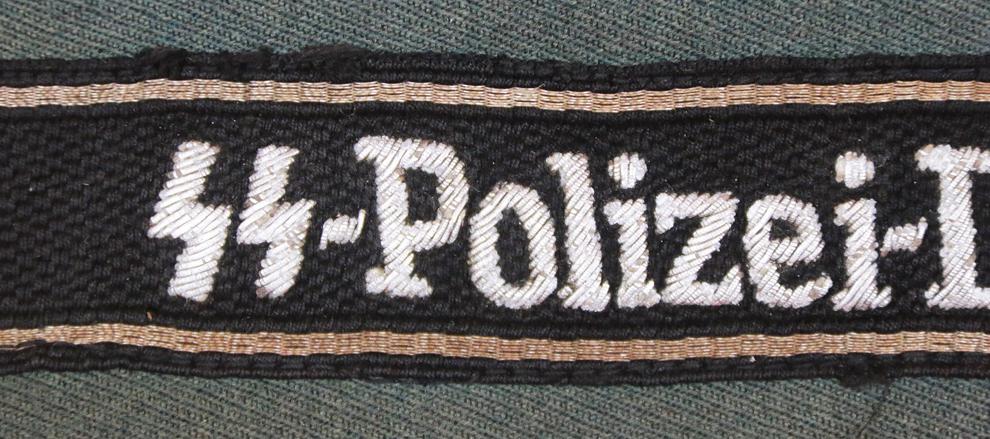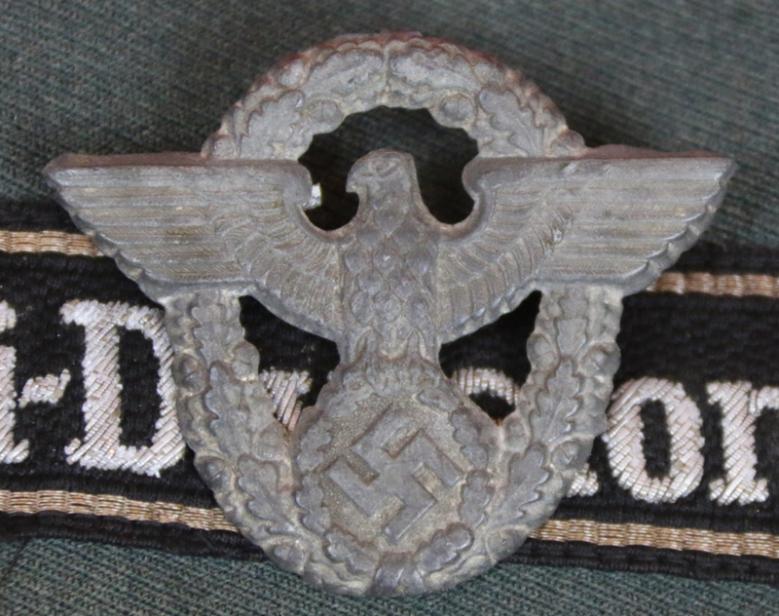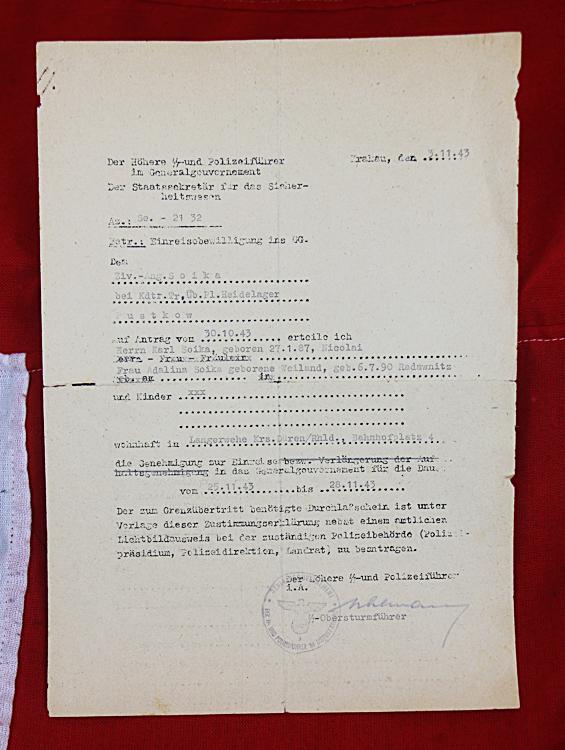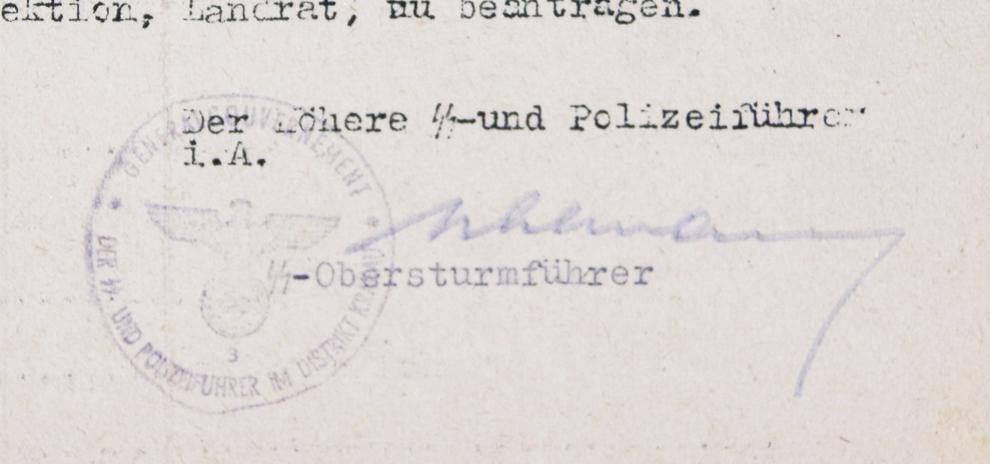WW2 SS Polizei Family Collection, 'Fuhrer Class' Cuff Title, Probably by Richter und Rohrlapper of Brandenburg, Original Family Polizei Photos, Pass Books and Paperwork etc.
A complete WW2 and pre WW2 SS Polizei 'Soika' family collection all regarding one older man and the younger probably his son who both served in the German Polizei, and the son in the SS Polizei Division in WW2. Papers, pass books, hand embroidered aluminium wire RZM 'fuhrer pattern' SS Polizei Division uniform cuff title, still sown to cut off uniform cuff, original personal photographs of Polizei briefings, and a personal portrait photo of the younger SS Polizei Division family member, an order of some kind to him signed by SS Polizei Obersturmfuhrer and typed Waffen SS papers in German, and a polizei cap badge. The cap badge has had old cap mount repairs. The 4th SS Polizei Panzergrenadier Division was one of the thirty-eight divisions fielded as part of the Waffen-SS during World War II.
The division was formed in 1939 as part of the Ordnungspolizei or Orpo (uniformed national police). While all German police organisations were controlled by Reichsfuhrer-SS Heinrich Himmler in his capacity as Chief of German Police in the Interior Ministry, they were not at this time considered part of the SS, nor was the Polizei Division on par with the other Waffen-SS divisions. This status was reflected in the quality of the equipment they were issued and their retention of police insignia and rank structure. The division was transferred to the Waffen-SS in 1942 and was upgraded to a Panzergrenadier division. It fought in France, the Soviet Union, Greece (where it orchestrated the Distomo massacre) and Pomerania and surrendered to the Americans in May 1945. The division was formed in October 1939, when 15,000 members of the Ordnungspolizei were drafted and placed together with artillery and signals units transferred from the army. These men were not enrolled in the SS and remained policemen, retaining their Orpo rank structure and insignia. Himmler's purpose in forming the division was twofold: in a period of heated bureaucratic infighting and competition for manpower, it permitted him to get around the recruitment caps the Wehrmacht had succeeded in placing on the SS, it also provided a means for his policemen to satisfy their military obligation and avoid army conscription.
The first commander was Generalleutnant der Polizei (Major-General) Karl Pfeffer-Wildenbruch, a career police commander who had been a general staff officer during World War I; simultaneous with his appointment he was also commissioned as an SS-Gruppenfuhrer. The division was equipped largely with captured Czech materiel and underwent military training in the Black Forest combined with periods on internal security duties in Poland. During the invasion of the Soviet Union (Operation Barbarossa), the division was initially part of the reserve with Army Group North. In August 1941, the division saw action near Luga. During heavy fighting for the Luga bridgehead the division lost over 2,000 soldiers including the commander, Arthur M?lverstadt. After a series of failed attacks in swampy and wooded terrain, the division, along with army formations, fought its way into the northern part of Luga, encircling and destroying the Soviet defenders.
In January 1942, the division was moved to the Volkhov River sector, and on 24 February it was transferred to the Waffen-SS; its personnel changing their police insignia to that of the SS. The formation was involved in heavy fighting between January and March which resulted in the destruction of the Soviet 2nd Shock Army. The remainder of the year was spent on the Leningrad Although its original thin paper RZM label is no longer present, this cuff title gives all the indications from other cuff titles made by the maker, it was likely made by cuff title producer, with RZM license № A4/21, by Richter und Rohrlapper- Band und Posamentenfabrik Brandenburg, with hand embroidery by M. Auer München who had the licence A4/91, for aluminium hand-embroidery on cuff titles. it is in very good worn condition
Souvenirs such as these were taken by the magnificent British & Commonwealth and Allied combatants throughout the world. Although the names of those veterans are most sadly often now lost in the mists of time, their heroic excursions with never be forgotten by most of us, as they are also symbolised by these very war trophies, that hundreds of thousands of allied veterans perished for, in order for the survivors to regain world freedom, cruelly stolen by the Axis Powers. Of course not all the world gained such freedoms at the end of 1945, but at least hundreds of millions did, which is a remarkable achievement, achieved by our finest generation, and by those that sacrificed all.
Code: 23778

